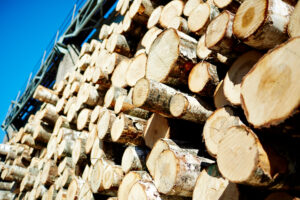Recent years in Western States have seen an increase in prevention tactics for wildfires. Extreme heat waves, droughts, and winds lead to devastating fires that can burn down entire forests.
Western States are prone to all of them, therefore, wildfire prevention measures have become a necessity.
Among the many preventative measures, the transition from traditional wooden utility poles to steel poles has gained significant traction, especially as a strategy to mitigate fire risk.
But what makes steel poles the superior choice over wood, particularly when it comes to fire mitigation? This article offers a glimpse into the matter.
Why Choose Steel Over Wood for Fire Mitigation?
Inherent Fireproof Properties
One of the most compelling reasons to switch from wood to steel is steel’s non-combustible nature.
Unlike wooden poles, which can easily ignite and contribute to the spread of wildfires, steel poles are fire-resistant. This distinction is crucial in fire-prone areas where even a single ignited pole can be catastrophic.
Wooden poles, once ignited, become a fuel source, exacerbating the intensity and spread of fires.
In contrast, steel poles do not burn, helping to prevent these secondary ignition sources and thereby minimizing the risk of fire escalation.
Compliance with Regulations
Fire prevention is no longer just a safety concern. Due to the damages of wildfires, it’s increasingly becoming a regulatory requirement.
For example, California, which has been at the epicenter of some of the most destructive wildfires in the U.S., has implemented stricter regulations for utilities.
These new guidelines push for the replacement of wooden poles with non-combustible alternatives to meet fire mitigation standards.
Steel poles meet these regulatory mandates with flying colors, ensuring utility companies not only improve safety but also stay compliant with evolving laws.
Resistance to Environmental Damage
Beyond their fire-resistant properties, steel poles offer superior durability and resilience compared to their wooden counterparts.
In regions prone to extreme weather conditions, such as high winds or heavy snow, wooden poles are more vulnerable to damage.
Cracks, splits, and decay over time can make wooden poles susceptible to collapsing, which could potentially spark fires if they come into contact with electrical wires.
Steel, on the other hand, endures these harsh environments, maintaining structural integrity even in severe weather.
This durability not only reduces the chance of pole-related fires but also leads to fewer disruptions and longer-lasting infrastructure.
Final Thoughts
The shift from wooden to steel utility poles is a necessary measure in wildfire prevention.
Steel poles offer clear advantages in fire-prone areas due to their fire-resistant properties, regulatory compliance, and resilience against environmental stress.
As wildfires continue to threaten vast regions, the need for durable, non-combustible infrastructure arises.
Steel poles offer a safer, more resilient solution for the environment, and also are better for compliance.





